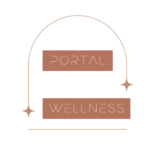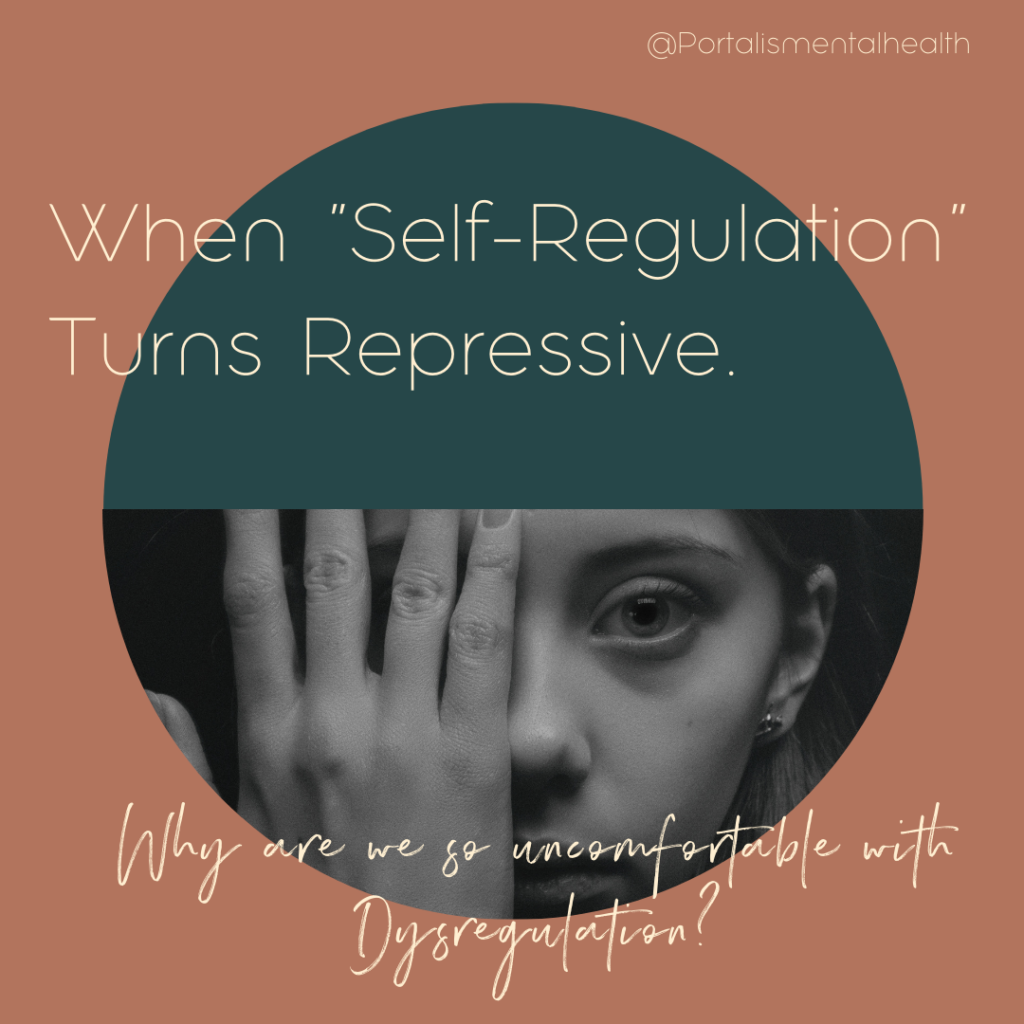Why are we so uncomfortable with Dysregulation?
I see a lot of people use “self regulation” in ways that I do not believe it was intended for.
People seem to be confusing self regulation with feeling or appearing outwardly calm or happy, and confusing dysregulation with feeling and expressing intense emotions, seeming illogical, or being in a “negative space.”
Let me break this down:
- Dysregulation is not bad. It is simply a biological process in which our nervous system shifts into different states meant to keep us safe when there is a perceived threat to our safety. This can look like fight, flight, freeze or fawn. It often feels more scary because we have less access to internal resources/parts of the brain and control than we would like (I have more in depth information on this in my blog)
- The things is…we are often not in the type of danger our bodies perceive that we are. Which causes us to react in ways inappropriate to the situation, often sabotaging what we really want, and keeping us from processing what is really happening beneath the surface, and thereby healing our core wounds.
- Self Regulation is the process of helping our bodies/nervous system feel safe(er) again.
When we suppress these intense feelings, when we restrict our emotional expression we are furthering that traumatization. We are exacerbating the widespread dissociation we have with our bodies, needs, and emotions.
- being logical/ calm – unemotional
- being positive, and having “good” perspective
- knowing what to do in the moment
- No intense emotiveness – yelling, collapsing, crying, rocking, looking angry
- Are cut of from ourselves
- Are making decisions based out of fear
- have a heightened sense of threat – and will perceive others/ situations as more attacking/threatening then they might be
- Will shut down/leave the situation
- Will placate, loose touch with our own needs, mirror and provide what others want.
- Might feel entrenched in shame
- Bring the unconscious conscious
- understand and work through triggers
- identify emotions present – even when they are not logical
- identify our needs
- attune to our bodies
- are curious and attuned to roots of our feelings/reactions
- give ourselves space and permission to feel and move through our fears/emotions ask for needs, and set boundaries
Discomfort with disregulation and emotional suppression is connected to trauma AND connected to White Supremacy/Colonialism/Capitalism.
Many of us through our family of origin or past relationships have been taught that our emotional expression was “too much” for others, or that emotional expression was always dangerous and scary. We were not celebrated, validated and joined in emotional expression or modeled how to move emotions such as grief, sadness, anger, and overwhelm.
This can cause a few things: People tend to avoid their own big emotions and those of others, they avoid conflict and appearing “overly emotional” around others, and/or don’t express emotion until it is at a breaking point causing more intense emotional expression and reactive behavior. When our expression was policed in childhood we internalize that and begin to police it in ourselves and others. This also connects to broader historical and systemic conditions.
Rich cultural traditions of Indigenous people, People of Color, and Black people of emotional expression, somatics and healing have been deemed as uncivilized and used to validate the racist beliefs of eugenics and beliefs that non-white people are less intelligent, capable, and were childlike (and not in a good way). Colonialism stripped people of their cultural practices and ways we have evolved to connect to our emotions and bodies. We know that Black people are consistently perceived as more “angry” or “out of control” and “dangerous” when expressing emotions than white people, perpetuating systemic racism and forcing them to repress their emotional expression to prioritize our (white people) comfort and their safety. These systems attempt to instill the belief that true emotional expression (especially of difficult emotions around others/or in community) is shameful, embarrassing, dangerous, bad, less than…etc.
Another good example of this is how people often feel “corny” or “cheesy” and “childish” when accessing somatics and emotional expression instead of analytics and cognition. When we are dissociated from our emotions and body, when we stifle emotional release and expression, we are disempowered because we are disconnected from our needs, we are disconnected from ourselves and others. Who does this serve? When we are disconnected, fragmented, fearful, and compliant?
Shame around dysregulation and emotional expression is rooted in systems that profit off our disconnect from each other and ourselves. We learn this shame through our family of origin in addition to the systems that permeate the air we breathe. Then we continue to project it on ourselves by repressing our own emotions and their expression, as well as project it on others by shaming or avoiding them when they are dysregulated.
There is SO MUCH to be said about this. If you are interested in learning more about the intersections of this and how these systems get internalized in our body I would suggest starting with “My Grandmother’s Hands: Racialized Trauma and the Pathway to Mending Our Hearts and Bodies” by Resmaa Menakem
What are your thoughts? Let me know the comments.


